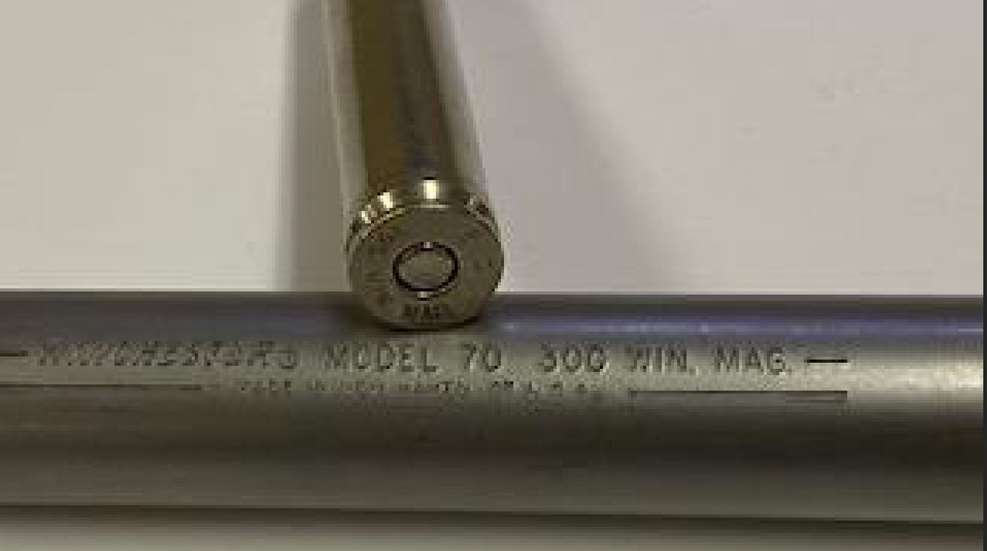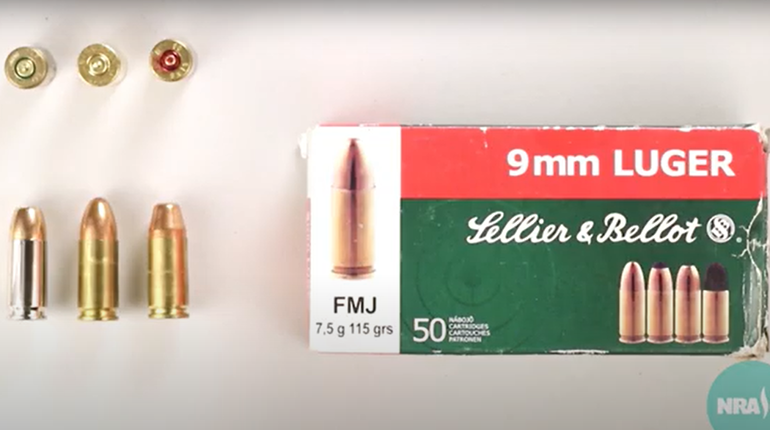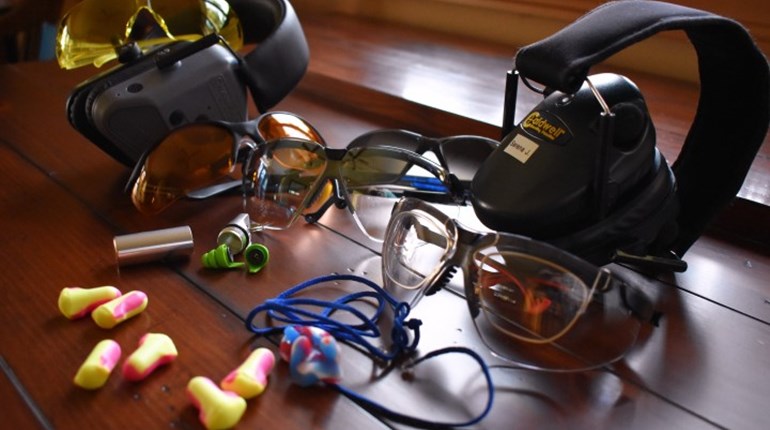
Knowing what your firearm is chambered for is critical for ultimate safety when shooting your gun. First, you must know what a chamber is. Many shooters regularly use the term “chamber,” but really do not know what it is or what it does. I see this in every NRA Firearms Training Course that I teach. Most of the students that attend my classes want to become NRA Certified Instructors. Almost all these individuals have a fundamental understanding of what a chamber is and what it does, but always come up short when defining this component.
This is because very few individuals, including many instructors, have never seen the inside of a chamber. The chamber of a gun is what defines that firearm, meaning the chamber is the part of the firearm that is milled out to accept a specific cartridge. The chamber in most firearms is located in the extreme rearward part of the barrel. This is where the cartridge is seated by the firearm’s action or bolt, placing the firearm in battery, or other words, making it ready to shoot. A revolver has multiple chambers that are located in the cylinder. For example, if your revolver holds five cartridges then it has five chambers, if your revolver holds six cartridges then it has six chambers, etc.
It is critical that you know what your firearm is chambered for so that you use the proper ammunition. Using the incorrect ammunition in your firearm can result in a catastrophic structural failure that can lead to serious bodily injury or death. When the correct ammunition is chambered in your firearm, the chamber is milled to the exact specification of the round. This means the angles of the cartridge’s neck, shoulder, and body fit tightly in the chamber once the bolt is closed. This allows the case of the cartridge to expand when fired, to create an airtight seal preventing the expanding gasses from blowing back towards the shooter. Pressure and gases that are not contained because of incorrect ammunition can cause the firearm to come apart or result in a “blown up” barrel. A properly fitted cartridge forces all the pressures and gases down the barrel and out the muzzle.
If you frequent a gun range, you have or probably heard someone ask another shooter, “What caliber is that gun?” What is being asked is, “What is that gun chambered for?” The next logical question is, where do we find this information? There are four ways of determining what your firearm is chambered for, and finding out if the gun is safe to shoot. The information can be found on the data stamp of the firearm; in the owner’s manual; by casting; and checking proper headspace clearances with Go, No Go gauges.

Data Stamp
The data stamp on the firearm is one of the best ways of determining what your firearm is chambered for. Data stamps on traditional rifles and shotguns are usually found on the barrel of the firearm near the receiver. The data stamp on modern sporting rifles (AR platforms) are usually found on the receiver or magazine well of the firearm. Rifle data stamps are usually very specific and can only safely accept the cartridge that is listed. With very few exceptions, rifles can only safely shoot the caliber indicated by the firearm’s data stamp.
Shotgun data stamps are also usually located on the barrel near the receiver. Shotgun data stamps indicate the gauge of the barrel and the length of the shotshell that can safely be chambered. Modern shotguns can be chambered in 28 gauge, 20 gauge, 16 gauge, 12 gauge, 10 gauge, and .410 caliber. Common lengths are usually 2 ¾”, 3”, and 3 ½” magnum. Choked barrels will also indicate if the barrel is improved cylinder (imp), modified (mod), or full (full).

Data stamps on handguns can be found in several locations. The data stamp on revolvers are usually found on the frame or barrel of the firearm. Another location that the data stamp on revolvers is on the frame behind the cylinder’s crane, seen when the cylinder is open.

Owner’s Manual
The owner’s manual of your firearm is one of the most important items that come with the purchase of a new gun. The manual contains all pertinent information a new gun owner needs to know, including the proper ammunition that you should use. Even though your firearm may have a data stamp noting the caliber that the gun is chambered for, there may be variations of ammunition that can or cannot be used in your new purchase.
Usually, the use of +P or +P+ ammunition will be found in the manual but will not be reflected in the data stamp. This type of ammunition contains higher than normal pressures to increase muzzle velocities. Remember to never exceed the pressures regarding ammunition that is noted in the firearm’s manual.
The firearm’s manual can also reflect if different ammunition calibers can be used in your gun. The best example of this is ammunition used in revolvers, especially magnums. For example, usually, a .357 Magnum can chamber a .38 +P+. .38 +P, or a .38 Spl. A .44 Magnum can chamber a .44 Spl, or a .460 S&W can chamber a .454 Casull or a .45 Colt. Just remember that if a firearm can chamber multiple calibers, you can go down in pressures, but not up with pressures.

Casting
Old firearms, both military and sporters, may not have a data stamp or owner’s manual. Many of these firearms may be chambered in uncommon calibers for the manufacturer or may have been re-chambered to accept a different caliber than it was originally chambered for. If your firearm does not have a data stamp, the safest thing to do before shooting it is to have the chamber cast. This should be performed by a qualified gunsmith.
Casting is done to make a mold of a firearm’s chamber so that the dimensions can be measured and compared to known cartridges. Casting is performed by “plugging” the end of the chamber, usually with a cleaning patch or other soft piece of material. A product called Cerrosafe is melted and poured through the breech and allowed to harden. The hardened mold is then pushed out of chamber by a cleaning rod. The cast is then measured to determine the caliber or gauge.
Go, No-Go Gauges 
There are gauges known as Go, No-Go that can be used to check a firearm’s chamber. Not only can these gauges be used to check a firearm’s chamber for the correct caliber, but also can be used to check for proper headspace of chamber length. Go, No-Go gauges are precisely machined components in the shape of a cartridge’s case or shotshell hull that match the firearm’s chamber.
Go, No-Go gauges come in a set of two or three gauges. You should never use just a “Go” gauge. At minimum, you need to use both the Go and No-Go gauges. A third gauge is sometimes used called a Field gauge. Make sure you follow the directions that come with your gauges to ensure that your firearm is safe to use.
Think of these gauges like a stoplight. A green light means “go,” and if a bolt closes on a Go gauge, the firearm is safe to shoot. A yellow light means “slow down to stop,” and a bolt should not close but if it does close on a No-Go gauge, it is a potentially hazardous situation, and you should not shoot. A red light means “stop,” and a bolt should not close with a Field gauge, but if it does close on a Field gauge, do not under any circumstance shoot because there is a high probability of catastrophic failure.

The three gauges measure different dimensions of your chamber. Go gauges measure the safe chamber dimensions of your firearm’s chamber for a specific caliber. No-Go gauges measure the minimum unsafe dimensions of your firearm’s chamber. The Field gauge measures the maximum unsafe dimensions of your firearm’s chamber. If the bolt of your firearm closes on the Go gauge, the gun is safe to shoot. If the bolt of your firearm does not close on either or both No-Go or Field gauge, the firearm is not safe to shoot and should be taken to a qualified gunsmith.
Knowing different ways of checking a firearm’s chamber is important because some firearms may not have either a data stamp nor a manual. I own and have encountered many firearms that do not have a data stamp or manual because of the country of origin or the age of the firearm. I always make sure the gun is safe to shoot, even if someone tells me the caliber. I always verify the chamber before I shoot a questionable firearm.
Accidents are avoidable if you take the time to check the firearm thoroughly. Never take your safety for granted. Checking and verifying a firearm should be routine before shooting any firearm with which you are not familiar.















































